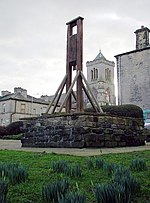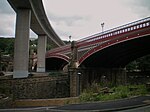Halifax, West Yorkshire
Geography of CalderdaleHalifax, West YorkshireMarket towns in West YorkshireTowns in West YorkshireUnparished areas in West Yorkshire ... and 1 more
Use British English from February 2017

Halifax () is a minster and market town in the Metropolitan Borough of Calderdale in West Yorkshire, England. It is the commercial, cultural and administrative centre of the borough, and the headquarters of Calderdale Council. In the 15th century, the town became an economic hub of the old West Riding of Yorkshire, primarily in woollen manufacture. Halifax is the largest town in the wider Calderdale borough. Halifax was a thriving mill town during the industrial revolution.
Excerpt from the Wikipedia article Halifax, West Yorkshire (License: CC BY-SA 3.0, Authors, Images).Halifax, West Yorkshire
St James Road, Calderdale
Geographical coordinates (GPS) Address Nearby Places Show on map
Geographical coordinates (GPS)
| Latitude | Longitude |
|---|---|
| N 53.725 ° | E -1.863 ° |
Address
Laura Mitchell Health & Wellbeing Centre
St James Road
HX1 1YP Calderdale
England, United Kingdom
Open on Google Maps








